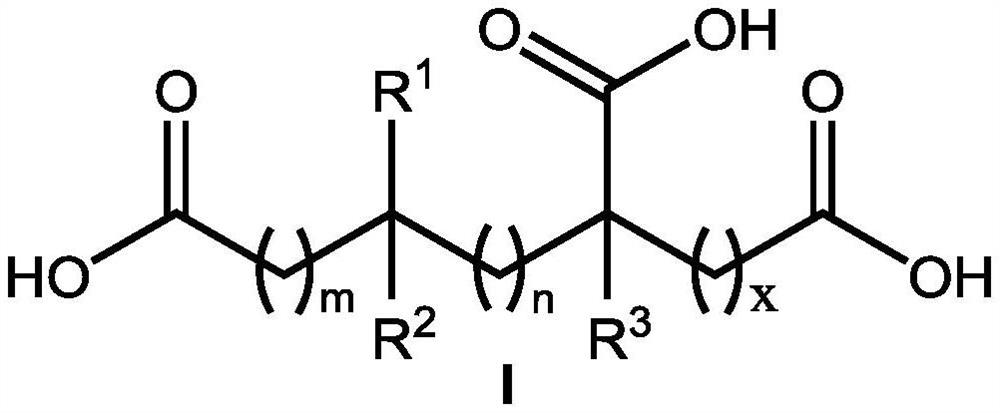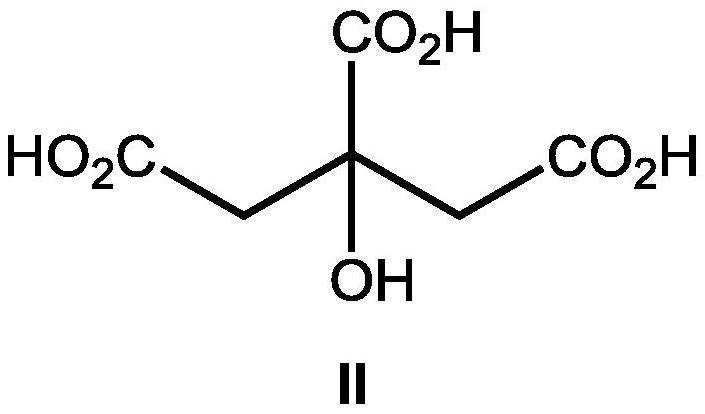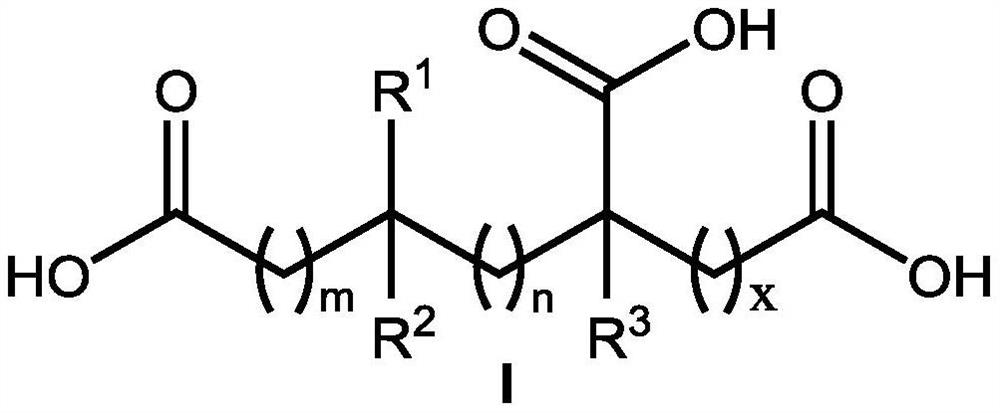Inhibitory activity of polycarboxylic acid compounds on fungi and oomycete appressorium and application of polycarboxylic acid compounds in prevention and treatment of plant diseases
A plant disease and compound technology, applied in plant growth regulators, botanical equipment and methods, applications, etc., can solve problems such as agricultural production losses, achieve less residue, prevent pathogens from infecting plants, and achieve precise control effects
- Summary
- Abstract
- Description
- Claims
- Application Information
AI Technical Summary
Problems solved by technology
Method used
Image
Examples
Embodiment 1
[0035] Example 1 The inhibition of polycarboxylic acid compounds on the formation of appresses of anthracnose bacteria
[0036]1. Bacteria to be tested: 20 anthrax strains in total, namely: grape anthracnose, sorghum anthracnose, camellia oleifera, apple anthracnose, pear anthracnose, strawberry anthracnose, capsicum oxysporum, capsicum anthracnose , deep split bamboo root seven (8270) anthracnose bacteria, deep split bamboo root seven (8069) anthrax bacteria, bovine anthracnose bacteria, huanghuali anthracnose bacteria, cucumber anthracnose bacteria, Luo Han Guo anthracnose bacteria, red camellia (9053) anthracnose bacteria, Red camellia (9059) anthracnose bacteria, cherry anthracnose bacteria, cruciferous vegetable anthracnose bacteria, walnut anthracnose bacteria, corn anthracnose bacteria.
[0037] 2. Test method:
[0038] 1) Anthracis bacteria produce conidia in large quantities: spot the anthrax bacteria strain to be activated on the potato agarose medium PDA, and place...
Embodiment 2
[0050] Embodiment 2 polycarboxylic acid compound is to the inhibition of blast fungus appressorium formation
[0051] 1. Bacteria to be tested: Magnaporthe oryzae P131.
[0052] 2. Test method:
[0053] 1) Magnaporthe oryzae produces a large number of conidia: Spot the to-be-activated Magnaporthe oryzae strain on the tomato oat plate OTA, and place it in a constant temperature light incubator at 28°C for cultivation. After 3-5 days, the colonies that grow on the surface of the petri dish are sufficient. The colonies on the OTA were fully interrupted, and then spread evenly on a new oatmeal plate with tomato juice, and cultured in a constant temperature and light incubator at 28°C. When the new hyphae can be seen growing out of the surface of the culture medium with the naked eye, gently interrupt the mycelium with a cotton swab, rinse it with water, and dry it. Cover the petri dish with a single layer of gauze, and culture it under light at 28°C for about 48 hours, that is,...
Embodiment 3
[0061] Inhibition of embodiment 3 polycarboxylic acid compound on the formation of appressorium of rubber spore YN42
[0062] 1. Bacteria to be tested: Colletotrichum acutatum YN42.
[0063] 2. Test method:
[0064] 1) Anthracis bacteria produce conidia in large quantities: spot the anthrax bacteria strain to be activated on the potato agarose medium PDA, and place it in a constant temperature light incubator at 28°C for cultivation. After 3-5 days, the colonies that grow on the surface of the petri dish are sufficient. Wash off all the hyphae on the surface of the culture medium with sterilized water, rinse them, dry them in the air, and cultivate them under light at 28°C for about 48 hours, and a large number of conidia can be seen on the surface of the PDA.
[0065] 2) Preparation of anthrax spore suspension: wash the spores on the spore-forming plate with sterile water, filter with three layers of filter paper, count with a hemocytometer, and adjust the concentration to ...
PUM
 Login to View More
Login to View More Abstract
Description
Claims
Application Information
 Login to View More
Login to View More - R&D
- Intellectual Property
- Life Sciences
- Materials
- Tech Scout
- Unparalleled Data Quality
- Higher Quality Content
- 60% Fewer Hallucinations
Browse by: Latest US Patents, China's latest patents, Technical Efficacy Thesaurus, Application Domain, Technology Topic, Popular Technical Reports.
© 2025 PatSnap. All rights reserved.Legal|Privacy policy|Modern Slavery Act Transparency Statement|Sitemap|About US| Contact US: help@patsnap.com



